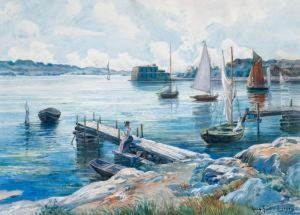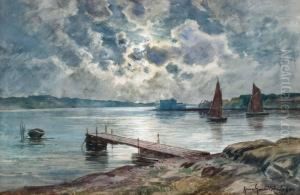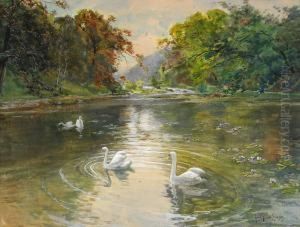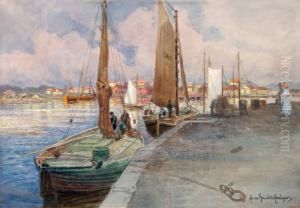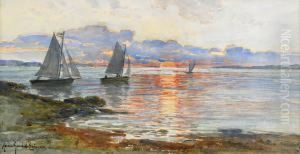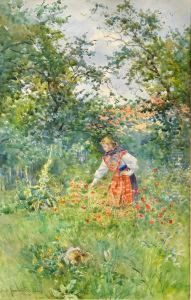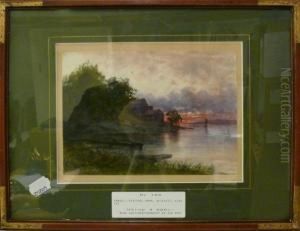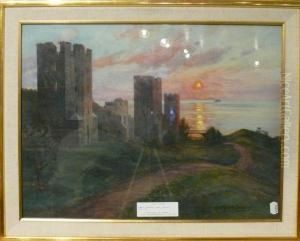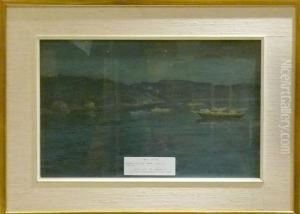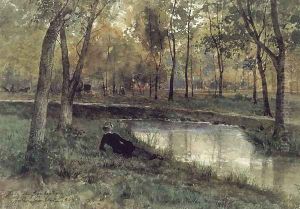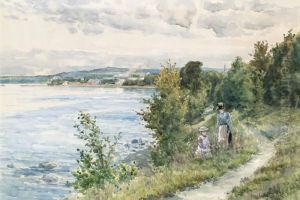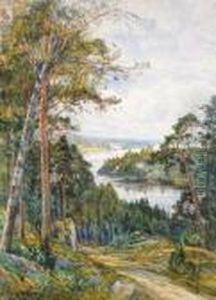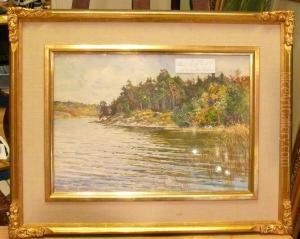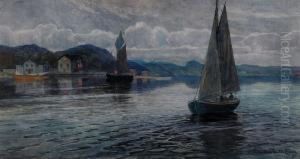Anna Gardell-Ericson Paintings
Anna Gardell-Ericson was a Swedish painter born on January 10, 1853, in Jonkoping, Sweden. She is known for being one of the pioneering female artists in Sweden during a time when the art world was predominantly male-dominated. Gardell-Ericson showed an early interest in art and pursued her passion despite societal expectations. She studied painting at the Royal Swedish Academy of Arts in Stockholm, which was quite progressive at the time for admitting female students.
After finishing her studies in Sweden, Anna Gardell-Ericson continued her education abroad, which was a common practice among Scandinavian artists of her time. She moved to Paris, where she was influenced by the Impressionist movement. In Paris, she studied under the notable French painters Jean-Léon Gérôme and Gustave Courbet. Her time in France greatly influenced her style, and she began to incorporate Impressionist techniques into her work, which was characterized by a vibrant palette and a focus on light.
Anna Gardell-Ericson's subject matter varied from landscapes and still lifes to portraits and genre scenes. Her works often depicted the Swedish countryside and the everyday life of its inhabitants, capturing the essence of the Scandinavian landscape and culture. She also painted a number of significant portraits, including those of prominent individuals of her time.
Throughout her career, Gardell-Ericson exhibited her paintings in several prominent venues. She participated in exhibitions in Sweden and abroad, gaining recognition and acclaim for her contributions to art. Her work is now part of several museum collections, including the Nationalmuseum in Stockholm.
Anna Gardell-Ericson played a significant role in paving the way for future generations of female artists in Sweden. She broke through gender barriers and became an inspiration for many women in the arts. She passed away on February 27, 1939, leaving behind a legacy of artistic achievements and a path for other women to follow in the world of art.




